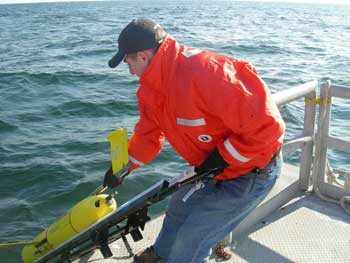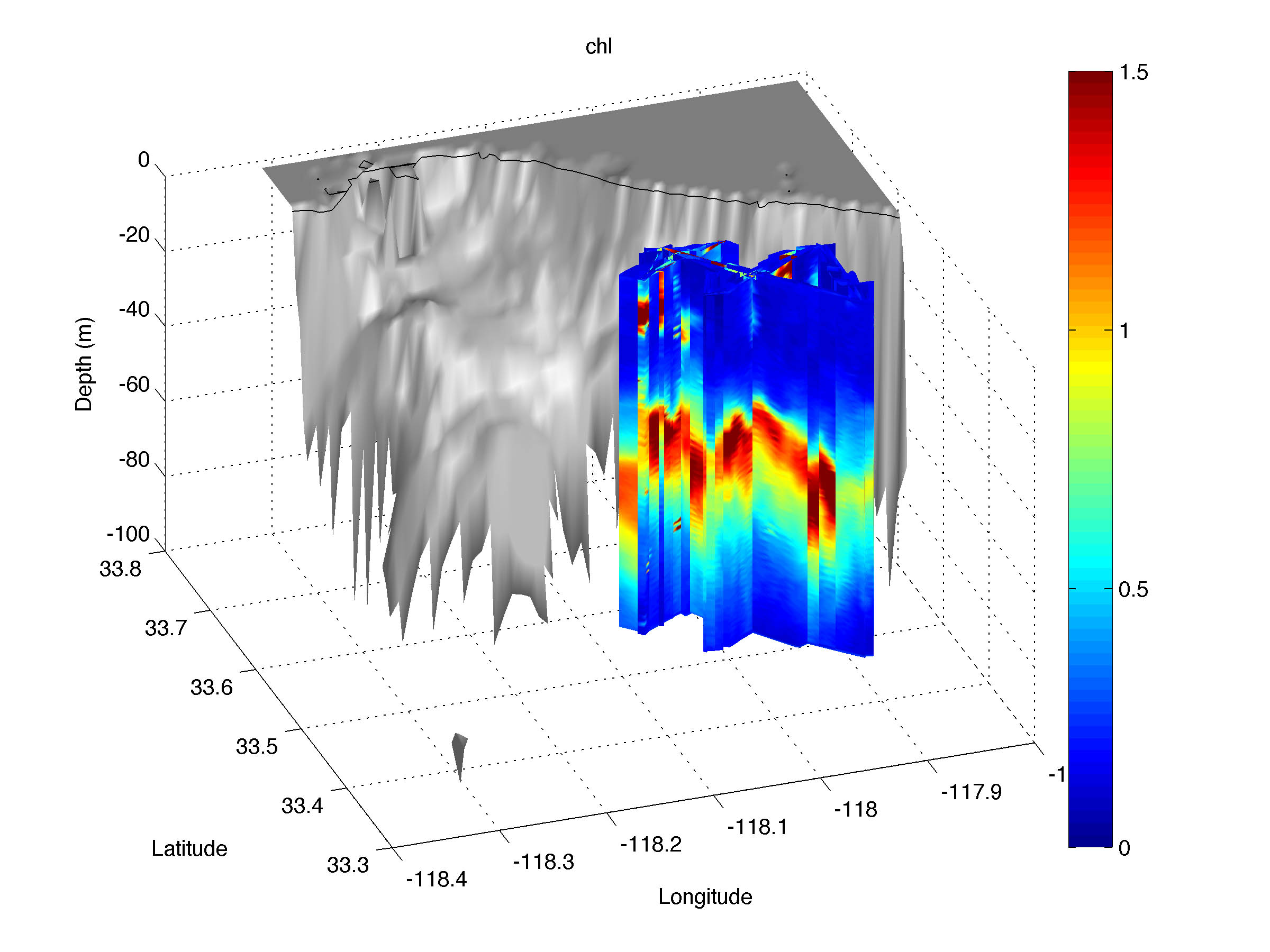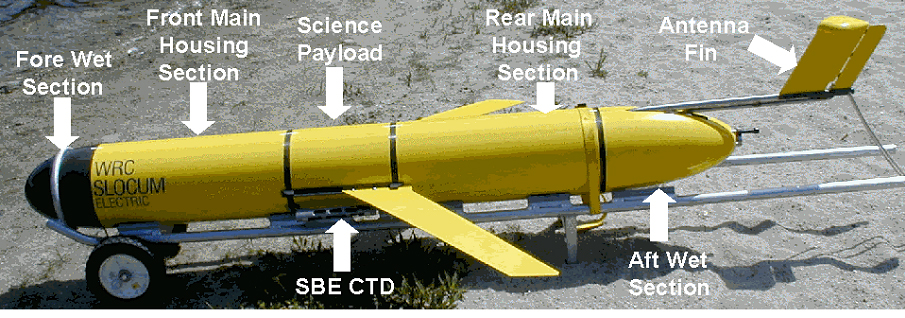|
||||
Underwater Glider |
||||
Slocum underwater gliders 'fly' through the water in a vertical saw-toothed pattern, sampling the water for a suite of variables including temperature and salinity. Gliders move through the water by adjusting their density with a pump system and steering with a tail rudder. Gliders navigate by following a set of waypoints that are uploaded before a mission. During a mission, the glider surfaces at each waypoint and uses GPS to check it's location. New waypoints can be added during a mission by uploading them remotely.
Double-click the video to play. |
|
|
||
|
Gliders are versatile and easily modified for each mission. Our gliders at UCSC have a CTD (conductivity-temperature-depth) sensor, an oxygen optode, and an ADCP (acoustic doppler current profiler). They can also measure chlorophyll, backscatter, and CDOM (colored dissolved organic material). |
|||
Gliders are easily deployed and recovered by hand off of a small boat. Once deployed, a glider completes several "test drives", before navigating to it's first waypoint and beginning a sampling mission. |
 |
|||
Gliders are very energy efficient and can continuously sample the upper ocean for weeks at a time. High resolution data from gliders allows scientists to produce detailed maps of the ocean to study physical and biological processes. Image below: A sub-surface chlorophyll maximum (red band) identified by a glider. |
||||
 |
||||

